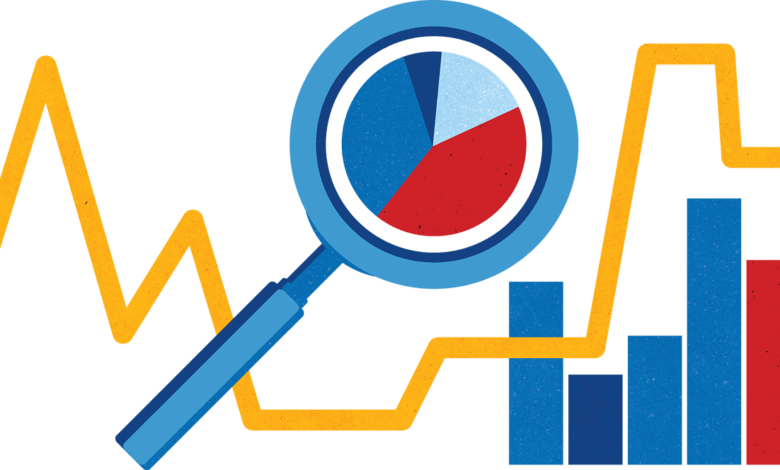Understanding The Complete Data Analysis Process

Today, corporations want every edge and profit that they can have. Because of barriers such as rapidly evolving economies, economic volatility, changing political climates, sophisticated customer perceptions, or even global epidemics, today’s companies are operating on skinnier error margins.
By making good choices, businesses that want to not only remain in business but also prosper will increase their chances of success. And how are these choices made by a person or institution? They do this by gathering as much relevant, actionable data as possible and using it to produce smarter judgments.
This approach is basic logic and relates to both individual as well as professional life. Without first figuring out what is at risk, the advantages and disadvantages, and the potential consequences, no one make critical point. Likewise, no business who wants to win should make choices based on prejudice. Institutions want data; they require information.
This need for information must be why the data analysis specialty comes into the equation. This post is your guide on data analysis, what the term means, the methods as well as processes available, common methods of data analysis, and also how data analysis can be performed. Currently, before going into the specifics of the techniques of data analysis, let us also grasp what data analysis is..
What is Data Analysis?
While there are various approaches for several individuals, companies and specialists to handle data analysis, many of them can be condensed into a one-size-fits-all concept. The method of cleaning, modifying, and analyzing raw data and derive actionable, important information is data analysis, which helps organizations make educated decisions.
By offering valuable insights and data, frequently displayed in maps, photos, tables, as well as graphs, the technique helps mitigate risks implicit in making decisions. In conversations about data processing, it is not surprising to hear the word “big data” raised. In order to manage big data into usable information, data analysis plays an important role.
What is the Data Analysis Method?
The method of data analysis, or rather, phases in data analysis, includes collecting all the data, processing it, examining the data, and using that to find trends as well as other observations. The method is made up of:
Gathering Requirement for Data.
Think about a reason why you are doing this research, what kind of data analysis you need to use, and what details you intend to examine.
Collecting Data.
It is method to grab the data from the sources, driven by the criteria you have defined. Research papers, interviews, surveys, quizzes, focus group, and structured observations are among the outlets. Be sure to arrange the data gathered for review.
Cleaning Data.
Not all of the information you gather is going to be helpful, so it is time to clean it now. This method is how white spaces, redundant documents, and simple errors are eliminated. Cleansing of data is necessary before taking the details on for review.
Analyzing Data.
Here is where you use apps for data analysis and other techniques to assist you in viewing and understanding the details and make judgements. MS Excel, R, Python, Chartio, Looker, Redash, Metabase, Rapid Miner, and MS Power BI data analysis tools are included.
Interpreting Data.
You need to evaluate them when you have your conclusions and come up with good solutions to the problem, depending on your results.
Visualizing Data.
Visualization of data is a glamorous way to display your data in graphs and charts in a way most people could interpret and comprehend it. You could use graphs, charts, bullet points, maps, or a variety of other techniques. By making you evaluate datasets and analyze relationships, visualization lets you gain useful insights.
Types of Data Analysis
Today, there are many popular data analysis forms available, widely used in the realms of information technology. There are:
Diagnostic Analysis.
When you have to find the reason of the occurrence of any event, you do diagnostic analysis. Using statistical research insights, researchers use diagnostic analysis to define data trends. Presumably, data analysts will find common trends that have occurred in the past and potentially use those solutions to address the new problems.
Predictive Analysis.
When you are thinking of events that will take place in future, you do predictive analysis. Data analysts forecast future events by using trends contained in older data and also current affairs. Although there is no such phenomenon as cent percent accuracy in forecasting, if the data analysts have more than enough comprehensive knowledge and the training to thoroughly examine it, the chances increase.
Prescriptive Analysis.
Combine all the information obtained from the other forms of data analysis, and you will have prescriptive analysis. Often, with one study form alone, a problem cannot be solved, and often involves several perspectives.
Statistical Analysis.
Statistical analysis is the answer to the question, what happened. This research involves the compilation, analysis, modelling, interpretation and presentation of information using dashboards. The study of statistics is divided into 2 sub-categories: inferential and descriptive.
Data Analyst Average Pay Scale
IBM projected many years ago that by the time 2020 will end, demand for data analysts would grow by 28 percent, culminating in far more than 360K new positions next year. Data analysts receive an annual salary of USD 75K reaching over USD 85K at the high end of the spectrum, according to Pay Scale reports.
Ways to Become a Data Analyst
You can begin by first investigating what it requires to be a data analyst if you would like to start a career in data analytics. You can take up by pursuing selected courses in data analytics, including the online certification training program for Data Analyst masters.
You can also check out the data analysis Bootcamp curriculum provided online by many colleges and websites. This curriculum offers a hands-on approach to bringing the relevant ideas to life through case studies and industry-aligned initiatives. In data analytics, you will be commonly exposed to key technology and advanced skills currently used.




